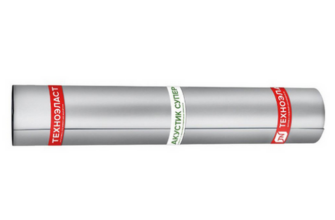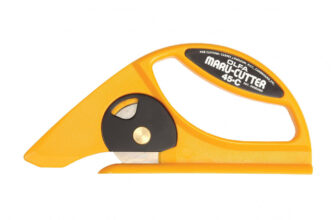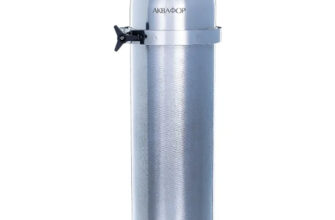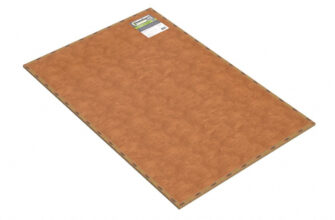Review of the best according to the editorial board. On the selection criteria. This material is subjective and does not constitute advertising and does not serve as a purchase guide. Before buying, you need to consult with a specialist.
In a private house, in contrast to a multi-storey one, there is much more heat loss. The air heated from the heating gives off the temperature to the walls, windows, roof and floor. In order not to spend even more money on heating, it is advisable to carry out insulation, for which various materials are produced. We have prepared a rating of the best home insulation, based on feedback from masters and ordinary buyers, as well as product characteristics. This will help you navigate the available variety and choose insulation for your home with optimal properties for walls, attic or floor and at an affordable price.
- How to choose insulation for your home
- Advantages and disadvantages of different types of insulation
- Rating of the best home insulation
- The best basalt insulation
- Rockwool
- Advantages
- disadvantages
- Hotrock smart
- Advantages
- disadvantages
- The best polystyrene foam insulation
- Technicol XPS Technoplex
- Advantages
- disadvantages
- Penoplex Comfort
- Advantages
- disadvantages
- The best foam insulation
- Knauf Therm House
- Advantages
- disadvantages
- PSB S 15-O
- Advantages
- disadvantages
- The best fiberglass insulation
- Isover Warm House
- Advantages
- disadvantages
- Ursa geo
- Advantages
- disadvantages
- The best polyester fiber insulation
- Shelter EcoStroy SHES Arctic
- Advantages
- disadvantages
How to choose insulation for your home
Our rating contains the most popular types of insulation. Before considering it, we will briefly touch on the main parameters that you should pay attention to when choosing:
- Thermal conductivity. The indicator informs about the amount of heat that can pass through different materials under the same conditions. The lower the value, the better the substance will protect the house from freezing and save money on heating. The best values are 0.031 W / (mK), the average are 0.038-0.046 W / (mK).
- Water vapor permeability. It implies the ability to let moisture particles pass through (breathe) without holding it in the room. Otherwise, excess moisture will be absorbed into building materials and promote mold growth. Heaters are divided into vapor-permeable and impermeable. The value of the former ranges from 0.1 to 0.7 mg / (ppm Pa).
- Shrinkage. Over time, some heaters lose volume or shape under the influence of their own weight. This requires more frequent fixing points during installation (partitions, clamping strips) or use them only in a horizontal position (floor, ceiling).
- Mass and density. The insulation characteristics depend on the density. The value varies from 11 to 220 kg / m3. The higher it is, the better. But with an increase in the density of the insulation, its weight also increases, which must be taken into account when loading on building structures.
- Water absorption (hygroscopicity). If the insulation is directly exposed to water (accidental spillage on the floor, roof leakage), then it can either withstand it without harm, or deform and deteriorate. Some materials are not hygroscopic, while others absorb water from 0.095 to 1.7% of the mass in 24 hours.
- Operating temperature range. If the insulation is laid in the roof or directly behind the heating boiler, next to the fireplace in the walls, etc., then maintaining the elevated temperature while maintaining the properties of the material plays an important role. The value of some varies from -60 to +400 degrees, while others reach -180 … + 1000 degrees.
- Flammability. Heaters for the home can be non-flammable, low-flammable and highly flammable. This affects the protection of the building in the event of accidental fire or deliberate arson.
- Thickness. The cross section of the layer or roll insulation can be from 10 to 200 mm. This affects how much space is required in the structure for its placement.
- Durability. The service life of some heaters reaches 20 years, while others up to 50.
- Simplicity of styling. Soft insulation can be cut with a little extra and they will tightly fill a niche in the wall or floor. Solid insulation needs to be cut exactly to size so as not to leave 'cold bridges'.
- Environmental friendliness. Implies the ability to release vapors into a dwelling during operation. Most often these are binder resins (of natural origin), so most materials are environmentally friendly. But during installation, some species can create an abundant dust cloud that is harmful to the respiratory system, and prick hands, which will require protection with gloves.
- Chemical resistance. Determines whether it is possible to lay plaster on top of the insulation and paint the surface. Some species are completely resistant, others lose from 6 to 24% of their weight upon contact with alkalis or acidic environment.
Advantages and disadvantages of different types of insulation
Having considered the criteria for choosing a heater for a house, we will briefly formulate the advantages and disadvantages of the types of thermal insulation materials in the table for clarity.
|
TYPE OF HEATER |
ADVANTAGES |
LIMITATIONS |
|
BASALT WOOL |
+ LOW THERMAL CONDUCTIVITY + EASY CUT AND FITS + Vapor permeability + DOES NOT BURN + LOW WEIGHT + RANGE OF THICKNESS FROM 50 TO 200 MM + DENSITY FROM 11 TO 200 KG / M3 |
-MAY LOSE SHAPE -SUPS WATER -When laying you need respiratory protection -HIGH PRICE |
|
POLYSTYRENE FOAM |
+ COMPRESSIVE STRENGTH + LOW THERMAL CONDUCTIVITY + LOW WATER ABSORPTION + PRESERVATION OF THE FORM AFTER YEARS + RANGE OF THICKNESSES FROM 20 TO 50 MM |
-YOU NEED TO CUT EXACTLY TO SIZE -NOT SUITABLE FOR ROOF -RELATES TO STRONG FIRING GROUP – MAXIMUM DENSITY 35 KG / M3 -HIGH PRICE -EATING RODENTS |
|
STYROFOAM |
+ AFFORDABLE PRICE + NOT AFRAID OF WATER + RETAINS FORM + ECOLOGICALLY FRIENDLY + WITHDRAWS MECHANICAL LOADS + DO NOT EAT RODENTS + RANGE OF THICKNESS FROM 20 TO 50 MM + LOW WEIGHT |
-HIGHLY FLAMMABLE -REQUIRES PRECISE CUTTING WHILE INSTALLING – CORNERS CRASHED DURING INSTALLATION -NOT SUITABLE FOR ROOFING – AVERAGE THERMAL CONDUCTIVITY FROM 0.041 W / (mK) -LOW DENSITY |
|
GLASS WATER |
+ AFFORDABLE PRICE + SEALS WELL + DOES NOT BURN + ENVIRONMENTALLY SAFE + RANGE OF THICKNESSES 50-200 MM + EASY |
-HAND JACKET AND LUNG HARMING DURING INSTALLATION -HYGROSCOPIC -LOSES FORM – AVERAGE THERMAL CONDUCTIVITY FROM 0.04 W / (mK) -LOWER CHEMICAL RESISTANCE |
|
POLYESTER FIBER |
+ NO WATER + DO NOT LOSE FORM + LOW THERMAL CONDUCTIVITY COEFFICIENT + FREE OF PHENOL + HYPOALLERGENIC + SHEETS CRASH + LOW WEIGHT |
-HIGH PRICE -BURNING |
Rating of the best home insulation
| Nomination | a place | Name of product | price |
| The best basalt insulation | 1 | Rockwool | 695 RUB |
| 2 | Hotrock smart | 302 RUB | |
| The best polystyrene foam insulation | 1 | Technicol XPS Technoplex | RUB 1,100 |
| 2 | Penoplex Comfort | RUB 980 | |
| The best foam insulation | 1 | Knauf Therm House | 890 RUB |
| 2 | PSB S 15-O | RUB 1,688 | |
| The best fiberglass insulation | 1 | Isover Warm House | RUB 660 |
| 2 | Ursa geo | 800 RUB | |
| The best polyester fiber insulation | 1 | Shelter EcoStroy SHES Arctic | RUB 1,780 |
The best basalt insulation
This category of insulation in the rating is also called stone or mineral wool. It is obtained by melting basalt rocks, during which thin fibers are formed. The substance is completely natural, and natural resins are used for the bond.
Rockwool
Rating: 4.9
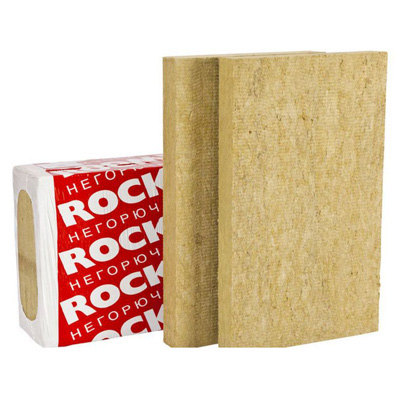
In the first place in the ranking of basalt insulation for the home is the company's product from Denmark. Cotton wool is produced in rolls and slabs, which is convenient for installation on logs or when laying in walls. The material can be used for both internal and external insulation of the house. In terms of thickness, the manufacturer offers options from 50 to 100 mm with a density of 37 kg / m3. Stone wool is completely non-flammable and safe for living quarters. The masters in the reviews share that you can buy it in various packaging of 6-12 sheets per package, which is practical for different volumes of work. Insulation is suitable for all building materials in the house. Cotton wool fibers can withstand temperatures up to 1000 degrees, so it can even be used to cover fireplace walls.
Our experts liked the home insulation because of the new Flexy technology. One of the edges of the sheet has a springy property and is additionally expanded after installation. Such an edge is specially marked by manufacturers and improves the tightness of the installation, for which the product got into the rating of the best.
Advantages
- does not crumble during installation;
- excellent sound insulation;
- easy to fit;
- light weight with a density of 37 kg / m3.
disadvantages
- the whole body itches a lot after laying;
- thermal conductivity increases when wet;
- absorbs water up to 1 kg per m2;
- more props needed for vertical installation.
Hotrock smart
Rating: 4.8
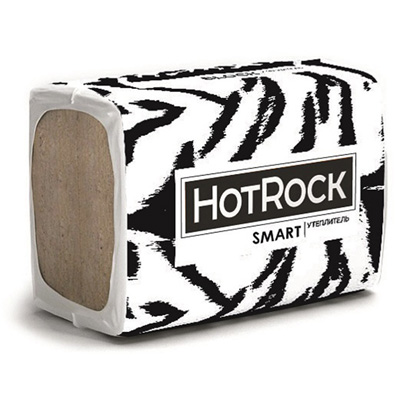
In second place in the ranking is a product from a Russian manufacturer. This insulation is produced in the form of plates with a thickness of 50-100 mm and has a thermal conductivity of 0.036 W / (mK). In its production, organic substances (resins) were used no more than 2.5%, therefore, during operation, no odors are emitted in the house. The insulating layer completely does not support combustion and can be used as a fire barrier in metal doors.
We have included insulation in the rating of the best due to a good combination of price and quality, with which buyers agree in reviews. The company guarantees the life of insulation in the house up to 50 years. Basalt slabs are produced on German equipment, and a new furnace is used to melt the rock, which ensures good quality at an affordable price. The material also has a compressibility of up to 50%, against 30% of competitors, so the masonry is especially dense and the insulating layer takes up less space in the room.
Advantages
- small weight – with dimensions of 1200×600 mm, the plate weighs less than a kilogram;
- does not burn at all;
- low thermal conductivity;
- has three safety certificates in Russia;
- suitable for cold attics, pitched roofs and floor insulation.
disadvantages
- water absorption 1.5%;
- loses shape without proper fixation;
- density of 22 kg / m3 loses to competitors;
- not recommended for home walls.
The best polystyrene foam insulation
Extruded polystyrene foam is produced by foaming polystyrene. The result is a hardened foam with small cells isolated from each other. Thin walls do not allow actively transferring temperature, due to which the insulation effect occurs.
Technicol XPS Technoplex
Rating: 4.9
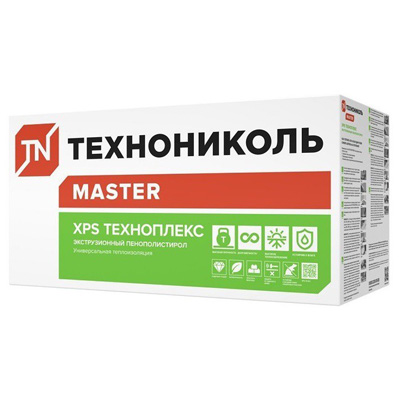
In this category of heaters, in the first place is the product known for its white and green packaging. Home insulation is made in Russia. The material is produced in the form of plates with a thickness of 20 to 100 mm, which is liked by the masters in the reviews, since it allows you to choose the optimal section for various parts of the house. The use of thermal insulation in the bathroom and in the kitchen is allowed, because it is capable of transmitting steam with a coefficient of 0.01 mg / (mhPa). At the same time, the surface does not absorb water, preventing the development of fungus.
Our experts liked the insulation because of its compressive strength of 0.1 MPa at 10% deformation. This allows you to insulate the floors along the logs and not worry about the load placed on them. It can also be used when organizing underfloor heating in a house with pipes or cables. This effect was achieved by adding nanocarbon, visible by its light gray tint. For this product and pressed into the rating as the best for floor insulation.
Advantages
- wide range in thickness from 20 to 100 mm;
- low thermal conductivity 0.032 W / (mK);
- L-shaped hem for easy insertion under construction;
- almost does not absorb water (0.1%);
- high vibration resistance.
disadvantages
- high price;
- the substance burns and smokes strongly;
- produced only in slabs.
Penoplex Comfort
Rating: 4.8
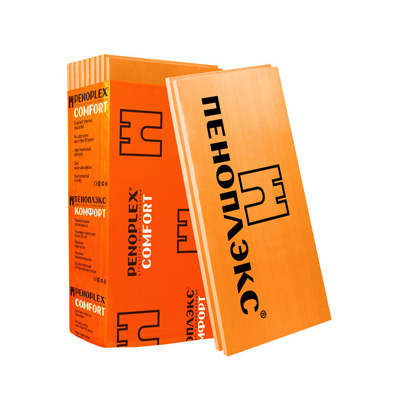
In second place in the ranking is another domestic insulation used for sound and heat insulation of a house. Extruded polystyrene foam has a thickness of 3-5 cm and is produced in sheets of 118×58 cm. It is sold in packs of 4-12 sheets. The thermal conductivity coefficient is close to the minimum and amounts to 0.033 W per meter per Kelvin. The manufacturer assures of the versatility of the insulation, both in terms of spatial placement and temperature range. The substance does not deteriorate from precipitation and has a compressive strength of up to 0.18 MPa. But users share in the reviews, the material can damage the rodents in the house, so you should first remove them, and then carry out the installation.
We marked this insulation in the rating as optimal for thermal insulation of a balcony in a two-story house, a veranda or a covered terrace. The product is designed to maintain its properties even at a temperature of -50 degrees, therefore it is suitable for use in unheated rooms. Masters in reviews recommend it for both internal and external insulation of the house.
Advantages
- keeps its shape well;
- universal in application;
- easy;
- serves up to 50 years;
- does not deteriorate from water and frost.
disadvantages
- do not lay next to heating sources that give out temperatures over 75 degrees;
- high price;
- combustible material;
- precise cutting is required.
The best foam insulation
The material is obtained by foaming the polymer, but differs from the previous group of products in the rating by larger cells. This technology is easier to implement, so home insulation is cheaper, but the density is one of the lowest.
Knauf Therm House
Rating: 4.9
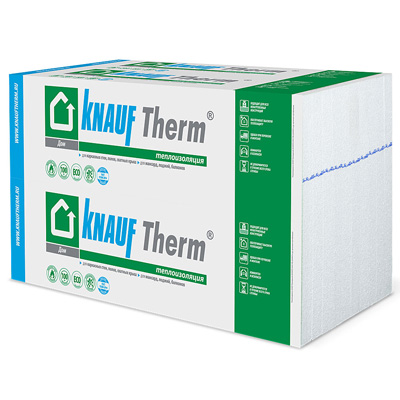
The first place in the rating was taken by a product of a well-known brand, the name of which directly indicates its intended use – house insulation. Suitable for laying in floors on logs, insulating pitched roofs, laying in wall niches. Environmentally friendly and does not emit harmful gases into the room during operation. The manufacturer claims the service life of the insulation up to 100 years. The product is manufactured in accordance with GOST 15588-2014 and has quality certificates. Unlike extruded species, this one is not attractive to rodents.
The insulation is rated by experts as the lightest – the weight of a sheet of 100×60 cm with a thickness of 5 cm is 400 g. This is the best option for decorating the walls of a house if the masonry already gives a large load on the foundation and a minimum mass is required from the insulating layer so as not to harm the base . But in view of the rigid structure, the masters in the reviews are advised to insulate the seams with polyurethane foam in order to eliminate the 'cold bridges'.
Advantages
- the lowest price in the entire rating of goods;
- a light weight;
- many options for the section and size of the slabs;
- not afraid of water.
disadvantages
- density is only 10 kg / m3;
- burns and emits poisonous smoke at the same time;
- crumbles during installation;
- it is necessary to accurately cut and additionally insulate the seams with a sealant.
PSB S 15-O
Rating: 4.6

In second place in the rating is a domestic product produced with a density of 10 kg / m3. It gives light weight and minimal cost, which many users like in reviews. But the tensile strength of the hardened foam is small and amounts to 0.05 MPa in compression, and if you try to bend, then the material breaks. The thermal conductivity of the insulation is average – 0.042 W per meter per Kelvin. But the installation does not need numerous jumpers and fixation points, so less time is spent on laying in the house. The plate can be located in any spatial position.
We have added insulation to the rating as having the widest range of sizes. Polyfoam is available in dimensions 1×1 m, 1×1.2 m, 1×2 m, which is convenient for quick installation into the walls of the house in order to immediately sew up a large area. On request, the manufacturer can provide other dimensions required by the user.
Advantages
- resistant to aging;
- not affected by moisture;
- do not spoil microorganisms;
- environmentally friendly.
disadvantages
- low density 10 MPa;
- on sale it is indicated in the old GOST (PSB-S15) and in a new way (PPS-10), which leads to confusion;
- burns strongly on contact with fire;
- additional sealing of joints is needed.
The best fiberglass insulation
This type of product in the rating is popularly called glass wool. It is produced by smelting soda, sand, borax, limestone and glass breakage. This results in thick fibers of various orientations that effectively inhibit heat transfer. The material is cheaper than analogs, but it hurts hands a lot during installation.
Isover Warm House
Rating: 4.9
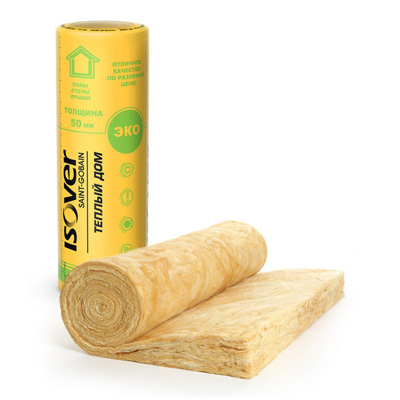
In the first place in this category of the rating is a product known to the whole world. Glass wool for the home is produced in rolls with a cross-section of 5 cm and a width of 55 cm. In production, the company uses the patented TEL technology, which is highly environmentally friendly. The insulation is suitable for use in a house on a pitched and straight roof, in floors and wall partitions. The product complies with ISO9001 and EN13162 standards. In addition to heat insulation, it contributes to noise protection. In terms of thermal conductivity, the substance has an indicator of 0.040 W / (mK). Buyers in reviews note an affordable price and a long service life with proper protection from water.
Our experts have added insulation to the rating due to the convenient form of release in rolls from 5.5 to 7 meters long. This is practical when filling walls in drywall partitions to immediately close the floor-to-ceiling space with a minimum of cuts. The 50 mm thickness is well suited for the profile width.
Advantages
- complies with hygiene standards (can be used in child care facilities);
- does not burn;
- completely from natural materials;
- elastic and does not require exact dimensions when cutting;
- lets steam out of the house.
disadvantages
- poorly keeps its shape;
- properties deteriorate when wet;
- inconvenient to lay;
- average values of thermal conductivity.
Ursa geo
Rating: 4.8

In second place in the ranking of the glass wool category is a domestic brand, which is often used as a household name when specifying the type of insulation. Now these products are known throughout the CIS and are in high demand. The thickness of the insulation for the house varies from 5 to 10 cm, and the roll width is 120 cm. A square meter weighs 1 kg (with a cross-section of 10 cm), which is convenient for calculating the mass for supporting structures. Glass wool is allowed to insulate not only the walls, floor and roof in the house, but also chimney pipes, heating, ventilation. The product belongs to the KM0 fire hazard class. The masters in the reviews like the vapor permeability, which is 0.64 mg / mhPa, but its thermal conductivity indicator loses to its analogues and is in the range of 0.040-0.046 W / (mK).
The product is listed as the best for pitched roofs and floor insulation in the house, since it is also available in convenient rolls. At the buyer's choice, there can be two rolls of 6 m in one package, or one, 10 m long. When installed in floors along logs, this allows you to stretch one roll immediately along the length of the room and save time.
Advantages
- glass wool does not burn;
- light weight makes it easy to transport and stack;
- does not seriously affect the foundation;
- high sound insulation;
- compatible with wood, aerated concrete, foam blocks, brick.
disadvantages
- low density 11 kg / m3;
- gets wet and changes shape;
- inconvenient to lay due to increased causticity.
The best polyester fiber insulation
Polyester fiber is produced by recycling plastic containers and other raw materials, which helps preserve the environment. The result is multidirectional synthetic fibers that allow steam to pass well, but retard heat exchange. In appearance and characteristics, the substance is similar to synthetic winterizer.
Shelter EcoStroy SHES Arctic
Rating: 4.9

This is the newest product in the ranking, released with MicroFiber technology. Insulation is obtained with multidirectional fibers, creating an elastic layer with a constantly maintained shape. The firba effect is the easy passage of steam. Nanotechnology has also managed to achieve a hollow structure of the villi, due to which the temperature is retained better and sounds are absorbed. The substance is hypoallergenic and has no phenol. According to environmental indicators, the purity is 100%. Thermal conductivity is at a minimum level – 0.031 W / (mK), which customers like in reviews. The insulation does not rot and is not of interest to rodents.
Our experts have included the product in the rating as the best for home insulation in a cold region, which confirms the name 'Arctic'. 100 mm of this material replaces 125 mm of mineral wool in efficiency, so it will be possible to achieve high thermal insulation with a smaller layer thickness.
Advantages
- low thermal conductivity;
- water-repellent properties;
- does not rot and is not attractive to rodents;
- service life 50 years;
- less thickness is required compared to other materials.
disadvantages
- high price;
- weak, but sustains combustion;
- emits harmful smoke when ignited.
Attention! This rating is subjective and does not constitute an advertisement and does not serve as a purchase guide. Before buying, you need to consult with a specialist.


